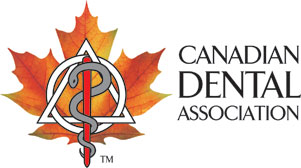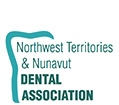Gum disease is one of the most common dental problems adults face, but gum disease can begin at just about any age. Gum disease often develops slowly and without causing any pain. Sometimes you may not notice any signs until the disease is serious and you are in danger of losing teeth.
The good news is:
- gum disease can almost always be prevented,
- if it starts, it can be treated and
- it can even be turned around (or reversed) in its early stages.
How it happens
Healthy gums and bone hold teeth firmly in place. Gums attach to teeth just below the edge of the gums. Gum disease affects the attachment between gums and teeth.
Gum disease begins with plaque. Plaque is clear and sticky and contains germs (or bacteria). It forms on your teeth every day. It also forms where your teeth and your gums meet. If plaque is not removed every day by brushing and flossing, it hardens into tartar (also called calculus).
Tartar cannot be removed by brushing and flossing. Tartar can lead to an infection at the point where the gums attach to the teeth (called the "point of attachment"). In these early stages, gum disease is called gingivitis. Your gums may be a bit red and bleed when you brush, but you may not notice anything.
As gingivitis gets worse, tiny pockets of infection form at the "point of attachment." You cannot see them, but you may notice puffy gums, traces of blood on your toothbrush, or a change in the colour of your gums. Your gums will probably not be sore.
Over time, the infection breaks down the gum tissue that attaches to the teeth. This is called "attachment loss." At this point, you will notice swelling, bleeding or colour changes in your gums.
Along with "attachment loss," gum disease causes the bone that holds your teeth in place to break down too. If gum disease is not treated, teeth become loose and in danger of falling out.
The best way to deal with gum disease is not to get it in the first place. To protect your oral health, brush your teeth at least twice a day, floss at least once a day and see your dentist regularly for oral examinations. After flossing, roll it up in a tiny ball and put it in the garbage. Never flush floss down the toilet.
Treatment
In its early stages, gum disease is very hard to see. You may not know that you have a problem. But every time you have a dental exam, your dentist looks for signs of gum disease.
Your dentist may use a dental tool called a "periodontal probe" to measure where your gums attach to your teeth. Healthy gums attach to teeth just below the edge of the gum. If your gums attach to your teeth below this point, it is a sign of gum disease.
X-rays show how much bone is around your teeth. If you have gum disease, getting rid of plaque and tartar gives your gums a chance to get better. That's why in the early stages of gum disease, the best treatment is cleaning by your dentist or dental hygienist to remove built-up tartar, brushing twice a day to remove plaque and flossing once a day to remove plaque.
When gum disease is more serious, your dentist may refer you to a dental specialist called a periodontist. A periodontist has at least 3 years of extra university training in treating gum disease, and in restoring (or regenerating) bone and gum tissue that have been lost because of gum disease.
A periodontist also treats serious forms of gum disease that do not get better with normal dental care. When serious gum disease is found, brushing and flossing become even more important.
Checking Your Gums
Check your gums on a regular basis for these signs of gum disease:
- a change in the colour of your gums
- gums that are red around your teeth
- gums that bleed every time you brush or floss
- bad breath that will not go away
- a taste of metal in your mouth
- shiny, puffy or sore gums
- teeth that are sensitive for no reason
These are all good reasons to see your dentist right away. Gum disease is one of the main reasons why adults lose their teeth. But the good news is gum disease can almost always be prevented. If it starts, it can be treated and can even be turned around (or reversed) in its early stages.
If gum disease is not treated, you can have gums that are always sore, red and puffy, get a painful infection (called an abscess) in the area between your teeth and gums or lose your teeth.
Without enough gum tissue and bone to hold your teeth in place, they can become loose and fall out. Nobody wants to have these things happen. With regular care, they won't.











